Chest muscle pain:
When you feel chest pain while breathing & feel difficulty moving the affected shoulder area, it is indicated to be chest muscle pain.
This pain is become to worsens when you do breathe deeply, sneezing & cough.
You also feel soreness & tenderness within the chest wall.
This pain is due to many reasons like muscle sprain, Injured ribs.
This injury is produced to pain with muscle spams. this pain is released by to RICE principle, pain medication & physiotherapy treatment.
Table of Contents
What is anatomy of the chest muscle ?
In the chest muscle include to 4 muscle:
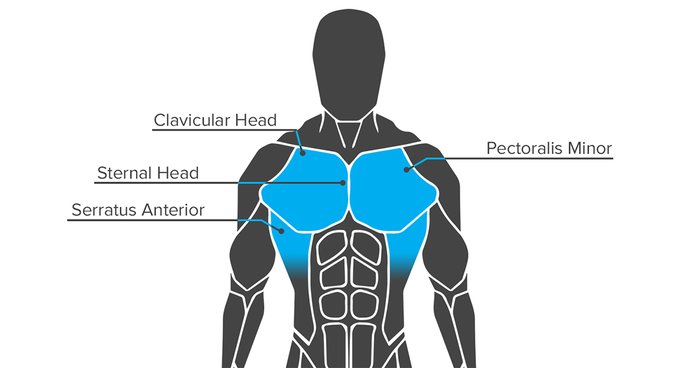
- Pectoralis Major
- Pectoralis Minor
- Serratus Anterior
- Subclavius
- Pectoralis Major:
- This muscle is the most superficial in the pectoral region.
- This muscle is large & fan-shaped.
- It is composed of a sternal head & a clavicular head:
- Both heads are distally attached to the inter-tubercular sulcus of the humerus bone.
- Clavicular head – originates from the anterior surface of the medial clavicle bone.
- Sternocostal head – it originates from the anterior surface of the sternum, the superior six costal cartilages & the aponeurosis of the external oblique muscle.
- The function of these Pectoralis Major Adducts & medially rotates the upper limb & draws the scapula anteroinferior.
- The clavicular head of this muscle also act individually to flex the upper limb.
- Pectoralis Minor:
- The pectoralis minor muscle is lie under the pectoralis major.
- This Both muscles are form part of the anterior wall of the axilla region.
- This muscle is Originates from the 3rd-5th ribs.
- It is inserts into the coracoid process of the scapula bone.
- Function of this Pectoralis Minor it is Stabilizes the scapula bone by drawing it anteroinferiorly against the thoracic wall.
- Serratus Anterior:
- The serratus anterior muscle is located more laterally in the chest wall & forms the medial border of the axilla region.
- This muscle have consist of several strips, which originate from the lateral aspects of ribs 1-8.
- This muscle is inserted into the costal surface of the medial border of the scapula bone.
- The function of this Serratus Anterior muscle is to rotate the scapula & allow the arm to be raised over 90 degrees.
- This muscle also holds the scapula bone against the rib-cage.
- Subclavius:
- It is a small muscle, which is located directly underneath the clavicle bone, running horizontally.
- This muscle Originates from the junction of the 1st rib & its costal cartilage.
- It is inserted into the inferior surface of the middle third of the clavicle bone.
- The function of this Subclavius muscle is Anchors & depresses the clavicle bone.
What is Causes of the chest muscle pain ?
Chest muscle strain :
- Chest muscle injuries mostly occur due to overuse.
- It occurs when you lifted something heavy & injured yourself during the playing sports such as gymnastics, tennis, rowing & golf in all sports need repetitive motion which is lead to chronic strains.
- Other activities which are also become to cause muscle strain include:
- When you do to reaching your arms above your head for long periods.
- When occur to contact injuries from sports, car accidents &other situations.
- You are lifting something while your body is twisting.
- You always skip the warm-ups before the activity.
- When the occur injury from malfunctioning equipment.
- Certain illnesses also cause muscle strain in the chest.
- Depending on symptoms muscle strain is classified as acute or chronic:
- Acute strain – results from injuries sustained immediately after the direct trauma like as a fall & car accident.
- Chronic strain – results from longer-term activities such as repetitive motions which are used in sports & certain job tasks.
- Depending on the severity muscle strain is classified into three grades :
- Grade 1 muscle strain =it is described as mild damage to less than 5% of muscle fibers.
- Grade 2 muscle strain = it is indicated to have more damage but the muscle isn’t fully ruptured so that loss of strength and mobility.
- Grade 3 muscle strain = it is described as a complete muscle rupture, which sometimes requires surgery.
Other possible causes which is also produce to chest pain include to :
- Anxiety attacks
- Peptic ulcers
- Digestive upset, like esophageal reflux
- Pericarditis
- Bruising as a result of injury
- Injured ribs:
- When to occur Injuries into the ribs like as bruises, breaks & fractures which is also produced to chest pain.
- Sometimes A person is heard a crack & feels extreme pain at the time of injury.
- Peptic ulcers:
- It is produced in sores in the stomach lining but it does not usually cause intense pain. it is given to result in a recurring discomfort in the chest.
- You can take to antacids which are helpful to you and usually relieve the pain of a peptic ulcer.
- Gastroesophageal reflux disease – GERD:
- GERD – Gastroesophageal reflux disease which is referred as to the contents of the stomach moving back up into the throat.
- It can produce to burning feeling in the chest & a sour taste in the mouth.
- Asthma:
- It is a common breathing disorder which is characterized by inflammation in the airways, which is produce chest pain.
- Collapsed lung:
- When builds up to air builds up in the space between the lungs & ribs, it can do a collapse which produces sudden chest pain during breathing.
- If present of a collapsed lung in any people they experience shortness of breath, tiredness & a rapid heart rate.
- Costochondritis:
- In this condition occur inflammation of the cartilage of the rib cage which is also produced chest pain.
- This pain becomes worse when you are in a sitting & lying position.
- Esophageal contraction disorders:
- In this condition occur spasms & contractions in the food pipe which is lead to chest pain.
- Esophageal rupture:
- when the food pipe bursts, which is given to results in sudden & intense chest pain.
- Hiatal hernia:
- A hiatal hernia means when part of the stomach pushes up into the chest which produces heartburn & chest pain.
- Tuberculosis:
- When growing in Tuberculosis bacteria in the lungs which are produced symptoms like a bad cough, coughing up blood & pain in the chest.
More serious possibilities causes which is also produce to chest pain include:
- Reduced blood flow to your heart = angina
- If occur to a blood clot in the pulmonary artery of your lung = pulmonary embolism
- Occur to tear in your aorta = aortic dissection
What is symptoms of the chest muscle injury ?
- You feel pain in every injury which may be sharp in an acute pull & dull in a chronic strain.
- You are observed to swelling & bruising.
- You feel muscle spasms & muscle tightness.
- Also feeling difficulty moving the affected area.
- This chest pain increases with movement of the chest muscle.
- This pain also becomes to worsens when you do the breathing deeply, sneezing & cough
- You also feel soreness & tenderness in the area of chest muscle pain.
- Sometimes you feel to upper back pain
Are certain people [ people age ] at increased risk?
- Normally Anyone people can experience chest muscle strain:
- Older people individuals a higher risk of experiencing chest wall injuries from falls.
- In the Adults chest pain is produced due to chest pulls & injuries as a result of car accidents & athletic activities.
- The Children are the lowest risk group for the chest muscle injuries.
In which condition do need you contact to the doctor as an emergency?
When you feel serious symptoms with the pain,which is needed to contact a doctor include the symptoms :
- Dizziness
- Irritability
- Fainting & fever
- Difficulty breathing
- Sweating
- Sleepiness
- Other some conditions which are needed to contact to the doctor :
- If you do the fast or laboured breathing
- If the pain is become to worsens over time & does not pain is relive after the pain medication
- If you feel too severe pain & numbness longer than 1 hour
- If feeling of weakness & lethargy
- If present redness & inflammation of the affected area
- Produce a popping sound when the injury is occurs
What is Diagnosis of the chest muscle pain?
- When you contact to doctor after the severe symptoms, the doctor is asked to some question about the history & symptoms & try to know about the causes of the pain.
- In some causes doctor is advised to some tests for diagnosis of the cause of the muscle pain in the test include ;
- Electrocardiogram (ECG)
- X-ray
- Magnetic resonance imaging (MRI)
What is the Treatment for chest muscle pain?
RICE principle:

As First-line treatment for mild chest muscle pain involves rest, ice, compression, and elevation (RICE principle):
- R – Rest = Stop the activity as soon as possible when you notice chest pain. You are doing the light activity two days after injury, but these activities stop when you feel the pain return.
- I – Ice =Apply ice or a cold pack to the affected area of muscle pain for 20 minutes up to three times a day, always apply to towel between to skin & ice pack prevent to ice burn it helps you release pain & swellings.
- C -Compression = You are wrapping to any areas of inflammation with an elastic bandage for release to swelling but don’t wrap too tightly because it is impair circulation.
- E -Elevation = You must be Keep your chest elevated, mostly at night so that Sleeping is a recliner to help you.
Pain medication :
- You can also take to non-steroidal anti-inflammatory drugs = NSAIDs like Diclofenac & Etodolac which help to release the muscle pain.
- For severe & persistent pain, a doctor prescribes stronger analgesics, and muscle relaxants & sometimes both to reduce pain & muscle spasms.
- You can also apply pain reliving gel & spray like volini gel & spray on the area of muscle pain release to muscle pain & swellings.
What is Physiotherapy treatment for chest muscle pain ?
Physiotherapy treatment is help you relieve pain, swelling, spam & tightness of the muscle pain.
The physiotherapy treatment includes massage, electrotherapy treatment & exercise therapy.
Massage :
- When the trigger or tender points is present in the muscle pain therapist is advised to massage therapy to release the muscle pain.
- For this massage in the chest muscles use the finger technique.
- First, you are searching for the tender spots & then do the massage each of them with the very short & slow strokes.
- Make sure to keep the muscle relaxed & only focus on the tender spots.
- Always use a maximum of 15 strokes on each tender spot.
- For treating the trigger points, it is s better to keep the massage sessions short & repeat them frequently.
- Massage is applied with the help of the oil
- Massage is applied 3 times per day.
Electrotherapy treatment:
When the pain is not relive after pain medication & massage then physiotherapist is advice to electrotherapy treatment for relive to muscle pain.
To relive the swellings, spams & pain therapist is advised to you electrotherapy treatment.
In electrotherapy, the treatment therapist is used to many machines.
- When the trigger & tender points are present therapists apply US = ultrasound therapy for the release of muscle pain.
- This treatment is applied with the help of gel & applies for 5 to 10 minutes on the area of pain.
- This therapy helps you release pain & swelling.
- Reduce to pain therapist is applied to SWD = short wave diathermy, IFT = Interferential Therapy, TENS = Transcutaneous Electrical Nerve Stimulation on the area of pain.
- SWD = Short wave diathermy is hot therapy for release to spams on the area of pain.
- IFT = Interferential Therapy & TENS = Transcutaneous Electrical Nerve Stimulation is applied with the help of gel & electrodes on the area of pain.
- This therapy is applied for 10 minutes to the area of pain.
Exercise therapy:
When you feel too comfortable & release from your muscle pain then the physiotherapist is advised to you exercise therapy reduce to muscle weakness & tightness.
The exercise therapy for muscle pain includes Stretching & strengthening Exercises.
Stretching exercise helps to relieve muscle tightness as well as strengthening Exercise is help you relieve muscle weakness.
Stretching exercise:
After the follow of electrotherapy for 2-3 days for release to muscle pain by physiotherapist then the therapist is advised to stretch for release to muscle tightness.
This stretching is applied when your pain is released & when you feel comfortable.
This all Stretching exercise helps you release muscle pain & tightness.
- Hands-behind-the-back chest stretch
- Stability ball chest stretch
- Doorway Stretch
- Ball Stretch
- Corner Stretch
- Wall Stretch
- Elbow Wrap Stretch
- Back Bend Stretch
- Lying Chest Stretch
- door jamb stretch
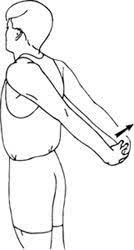
Hands-behind-the-back chest stretch:
- You are in a Standing position tall with your feet hip-width apart & your hands are at your sides.
- Must be Keep your chest lifted throughout the movement & interlace your fingers behind your back.
- Then pull your shoulder blades down your back & straighten your arms as you keep lifting your chest or gaze toward the ceiling.
- Hold this stretching position for 30 seconds, then gently release the clasp of your hands.
- Perform 3 times this stretching in 1 session & 3 times per day.you are in a Standing position tall with your feet hip-width apart & your hands are at your sides.
- Must be Keep your chest lifted throughout the movement & interlace your fingers behind your back.
- Then pull your shoulder blades down your back & straighten your arms as you keep lifting your chest or gaze toward the ceiling.
- Hold this stretching position for 30 seconds, then gently release the clasp of your hands.
- Perform 3 times this stretching in 1 session & 3 times per day.
Stability ball chest stretch:

- First Get on all fours & extend your right arm straight out to your right like a 3 o’clock position.
- Then place your right palm on a stability ball.
- Lower your body slightly till you feel a stretch on the right side of your chest.
- Then lift the right palm off the stability ball.
- Hold for this stretching position for 30 seconds.
- Then Lower your palm & repeat the movement two more times.
- Repeat this stretching exercise with the ball at 2 o’clock & then 1 o’clock, positions.
- Switch sides & repeat this sequence in all three positions.
Doorway Stretch:
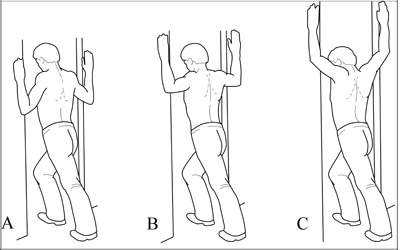
- You are in a Standing position in a doorway & extend the right arm down or at a 45-degree angle from your legs.
- Then Place your arm on the door frame & lean your body forward till you feel the stretch in front of your right shoulder joint.
- Hold this stretching position for 30 to 60 seconds & repeat on the opposite side.
- Perform 3 times this stretching in 1 session & 3 times per day.
Ball Stretch:
- You are lying face up on a large exercise ball.
- Lean back & look behind you.
- Must be letting your chest puff out toward the ceiling.
- Hold this stretching position for 30 to 60 seconds.
- Perform 3 times this stretching in 1 session & 3 times per day.
Corner Stretch:
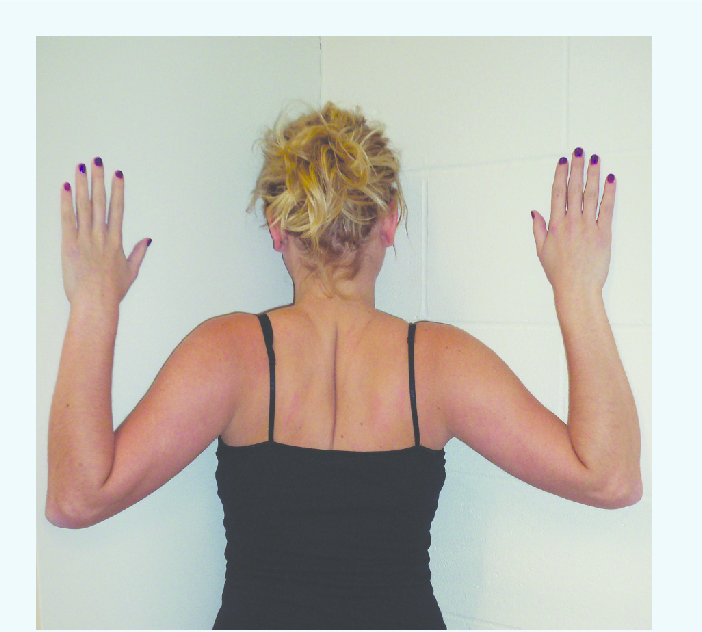
- You are in a Standing position & facing a corner, with your left foot close to the corner & right foot stepped back.
- Then Raise the arms at the sides so that the upper arms are parallel to the floor.
- Bend the elbow joint so that your hands are pointing to the ceiling.
- Place the forearms against the walls on either side of the corner.
- Then Bend your left knee & lean forward till you feel the stretch in your chest.
- Hold this stretching position for 30 to 60 seconds then repeat this exercise with your opposite leg in front.
- Perform 3 times this stretching in 1 session & 3 times per day.
Wall Stretch:
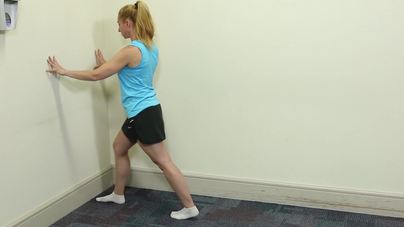
- You are in a Standing position against the outer corner of a room or a doorway.
- Bend your right elbow joint at a 90-degree angle so that your upper arm is parallel to the floor at shoulder height.
- Place your right forearm against the corner of the wall with your left side open to the room.
- Then gently press into the right forearm as you lean the left side into the open space of the doorway room to feel a stretch in your right pectoral muscle.
- Hold this stretching position for 30 seconds & repeat on the other side.
- Perform 3 times this stretching in 1 session & 3 times per day.
Elbow Wrap Stretch:

- You are in a Sitting position & cross-legged on the floor or stand with both feet firmly planted shoulder-width apart.
- Then Bring your arms behind your back & clasp each hand around the opposite elbow joint or forearm.
- Hold this stretching position for 30 seconds.
- Then Focus on lifting your collarbones & squeezing your shoulder blades down or toward each other.
- Perform 3 times this stretching in 1 session & 3 times per day.
Back Bend Stretch:

- You are in a Sitting or standing position for this stretching.
- Try to bring your hands to the back of your head.
- Point your elbow joint out to the sides of the room.
- Then Allow your head to fall back into your hands & as you open your chest.
- Squeeze your shoulder blades together.
- Do the Inhale or exhale deeply as you hold & pressing your chest upward.
- Perform 3 times this stretching in 1 session & 3 times per day.you are in a Sitting or standing position for this stretching.
- Try to bring your hands to the back of your head.
- Point your elbow joint out to the sides of the room.
- Then Allow your head to fall back into your hands & as you open your chest.
- Squeeze your shoulder blades together.
- Do the Inhale or exhale deeply as you hold & pressing your chest upward.
- Perform 3 times this stretching in 1 session & 3 times per day.
Lying Chest Stretch:
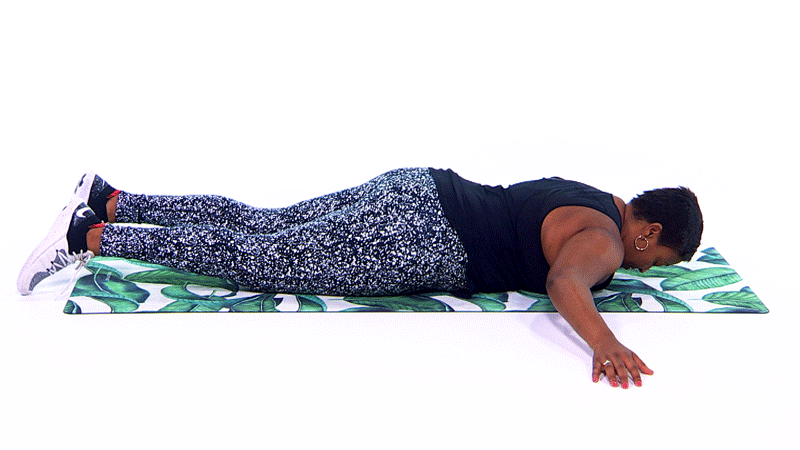
- You are lying on your stomach means a prone position on a workout mat.
- Try to Reach your arms to the sides of the room which creates a T shape with your body.
- Start to your left hand to your left hip joint as you slowly begin to roll to the right.
- Then leaving your right arm extended on the floor.
- Stop when you feel the stretch in the right pectoral muscle & hold this stretching position for 30 seconds.
- Perform 3 times this stretching in 1 session & 3 times per day.
Door jamb stretch:
- You are in a Standing position in a doorway & place your right upper arm on the door frame with your elbow joint flexed at a 90-degree angle.
- Try to Lean forward with your entire body & rotate your shoulder away from the door till you feel a good stretch at the front of the right shoulder joint.
- Hold this stretching position for 30 seconds & repeat the stretch.
- Perform 3 times this stretching in 1 session & 3 times per day.
Strengthening Exercises:
After the follow of electrotherapy & massage for 2 -3 days for release to muscle pain by physiotherapist then the therapist is advised to you strengthening exercise for release to muscle weakness.
This strengthening exercise is always advised when you feel to release pain & when you feel comfortable.
This all strengthening exercise helps to you muscle weakness & pain.
- Camel pose
- Bow pose
- Chest opener
- Floor Chest Roll
- Doorway Roll
- Standing Chest Expansion
- Push-Up Plus
- Release Chest Tightness
- Incline push up
- Flat bench press
- Decline bench press
- Cable crossover
- Resistance band pullover
Camel pose:

- First Kneel on the floor with your knee joint hip-width apart & your hands at your waist.
- Your toes are tucked or the tops of your feet which are flat against the floor.
- Then Slowly reach back toward your left heel with your left hand & follow with your right hand and heel.
- If you feel this exercise is difficult then place your hands on your lower back.
- Must be Keep your chest lifted, shoulders back & core muscle engaged.
- Then slowly push your hip joint forward, making sure to keep your chin down.
- When you feel OK then slowly release your head backwards.
- Hold this pose for at least five breaths then slowly reverse the move.
- Perform 5 times this stretching in 1 session & 3 times per day.
Bow pose:
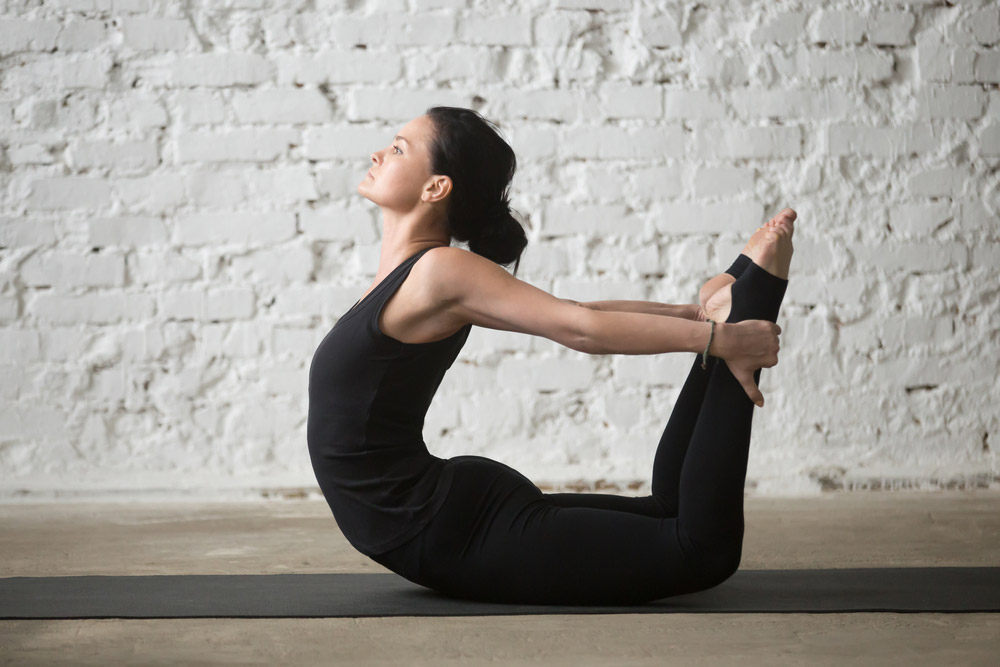
- You are lying face-down on the floor, with your hands beside your chest & your feet shoulder-width apart.
- Must be Keep your shoulders back & core muscle engaged.
- Bend your knee joint, reach back & grab the tops of your feet with your hands.
- Must be Keep your legs as parallel as possible.
- Then Kick your feet into your palms & lift your chest.
- Hold this stretching position for at least five breaths.
- Then Slowly release your feet & return to the starting position.
- Perform 5 times this stretching in 1 session & 3 times per day.

Chest opener:
- You are Standing with your feet shoulder-width apart.
- Place your right hand atop a bench & another stable object between waist & chest height.
- Then Straighten your arm & slowly turn to the left till you feel the stretch in your chest without forcing it.
- Hold this exercise for a 10 count & repeat on the other side.
- Perform this exercise 10 times in 1 session & 3 sessions per day.
Floor Chest Roll:
- You are lying on the floor with a large foam roller under your shoulder blades perpendicular to your body.
- Then roll onto your left side & do continue rolling so that the roller is under the left side of your chest.
- Try to Roll your body up then return to starting position.
- Continue to do this exercise for at least 30 seconds & repeat it on the opposite side.
- Perform this exercise 10 times in 1 session & 3 sessions per day.
Doorway Roll:
- You are in a Standing position facing a wall to the right of a doorway.
- Then Place a massage ball, lacrosse ball & tennis ball between the left side of your chest just in front of your shoulder joint & the wall.
- Try to reach your left arm through the door & lift or lower the arm so that you feel a gentle massage when the ball is touching your chest.
- Then Continue this exercise for at least 30 seconds &repeat it on the opposite side.
- Perform this exercise 10 times in 1 session & 3 sessions per day.
Standing Chest Expansion:
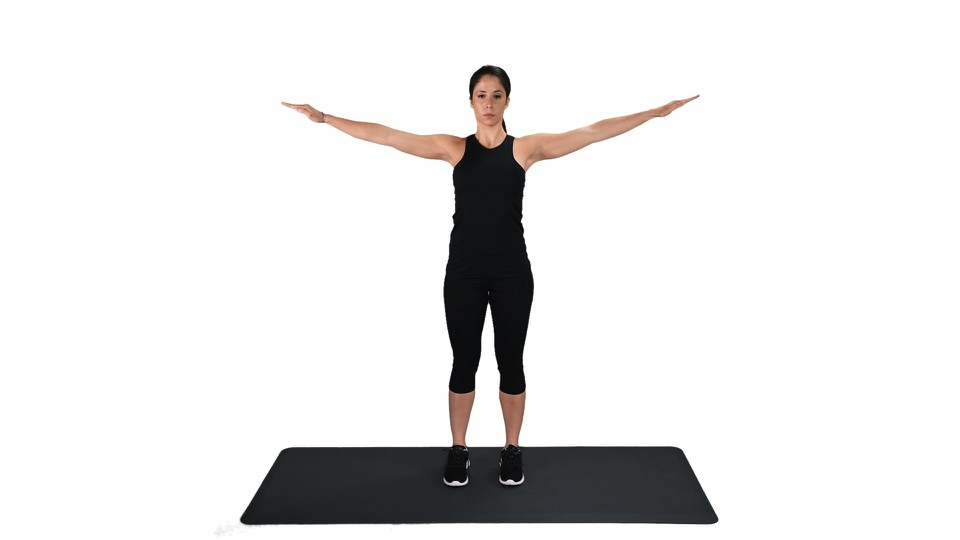
- You are Standing position with your feet hip-width apart & soften your knee joint.
- Then Interweave your fingers together behind your tailbone.
- Try to Press your knuckles toward the floor as you open your chest out & up.
- Hold this exercise position for 10 seconds.
- Perform this exercise 10 times in 1 session & 3 sessions per day.
- Hold this stretching position for 30 seconds.
- Perform 3 times this stretching in 1 session & 3 times per day.
Push-Up Plus:
- Start with into plank position with your arms at shoulder width & do a regular push-up.
- The “plus” comes when you’ve completed a rep & your arms are fully extended at the top position. Now, with your palms pressing firmly into the ground, broaden your shoulder blades & project them upward toward the ceiling.
- For the activation of the serratus anterior muscle, maintain this position for 30 seconds.
- Perform this exercise 10 times in 1 session & 3 sessions per day.
Release Chest Tightness:
- The First Use of a tennis ball means less pressure & a lacrosse ball for more pressure).
- Find the outer edge of your collarbone & place a ball below that.
- Try to Push up against a wall with the ball on the upper & outer part of your chest.
- Sometimes You feel a tenderness with this exercise when this exercise is focused on the correct area.
- Then pull your shoulder blades back & maintain a good posture while holding the mobilization.
- Hold this exercise for 30 seconds.
- Perform 3 times this stretching in 1 session & 3 times per day.
Incline push up:
- You are starting with your hands on the wall & a countertop height surface.
- Then Walk your feet back so that your body makes roughly a 45 degree angle with the floor.
- Must be Keep your body straight & your spine neutral.
- Lower your chest to the surface you’re leaning against.
- Stop for a moment & return to the start position.
- Perform this exercise 10 times in 1 session & 3 sessions per day.
Flat bench press:
- You are lying on your back on the bench with your knee joint bent & feet flat on the floor.
- Grasp the barbell with your thumb wrapped around the barbell & palms facing toward your feet.
- Then Press your arms straight toward the ceiling so that lift the weight off the rack.
- Try to Move the weight over chest level.
- Then Bend your elbow joint down at a 45-degree angle & slowly lower the weight to your chest.
- Must be Keep the bar approximately in line with your nipples.
- Stop for a moment, then press the weight back to the starting position.
- Perform this exercise 10 times in 1 session & 3 sessions per day.
Incline bench press:
- You are lying on your back on the incline bench with your knees bent & feet flat on the floor.
- Then Grasp the barbell, with your thumb wrapped around the barbell & palms facing toward your feet.
- Press your arms straight toward the ceiling which is to lift the weight off the rack.
- Place a Position of the weight above your collarbone.
- Then Slowly lower the weight down to your chest & approximately in line with your mid-chest to just above your nipples.
- Perform this exercise 10 times in 1 session & 3 sessions per day.
Decline bench press:
- You are lying on your back on the decline bench, with your knee joint bent & ankles secured behind the ankle rests.
- Grasp the barbell, with your thumb wrapped around the barbell & palms facing toward the feet.
- Press your arms straight which is lift the weight off the rack.
- Set the Position of the weight above your lower chest to the upper abdomen region.
- Then Slowly bend your elbow joint to lower the weight down to your chest & approximately in line with your nipples.
- Perform this exercise 10 times in 1 session & 3 sessions per day.
Cable crossover:
- You are standing position away from a set of high pulley cable machines & a resistance band anchored overhead.
- Then Select light to moderate weight to add challenge but give you success.
- Try to Grasp the hands & as you step forward with 1 foot.
- Must be Keep enough tension & control on the handles to keep them in front of your chest.
- Then Contract your chest muscles & bring the handles down.
- Forward across your body at roughly belly button level.
- Perform this exercise 10 times in 1 session & 3 sessions per day.
Chest dip:
- You are Standing position facing the two parallel bars & grasp them, palms facing in.
- Try to Straighten your elbow joint & press into your hands which is lifting your body so that it is in line with your hands.
- Then, bend your elbow joint & lower the chest toward your hands.
- Perform this exercise 10 times in 1 session & 3 sessions per day.
Resistance band pullover:
- You are, lying on your back with your head toward the anchor point.
- The band is placed about 1–2 feet higher than your head.
- Then Grasp the band overhead so that there is slight tension on the band.
- Must be Keep your thumbs pointing to the sky & your palms facing away from each other.
- Keep your core muscle tight & elbow joint straight.
- Pull the band toward your hip joint.
- Then Slowly return to the starting position with control.
- Perform this exercise 10 times in 1 session & 3 sessions per day.
What are the Complications of chest muscle pain?
- Complications of the chest injuries are it affects your breathing.
- Breathing difficult it is lead to the risk of developing a lung infection.
What is Recovery from chest muscle pain?
- You should avoid strenuous exercise, such as heavy lifting during the recovery phase.
- When you feel relive the pain then slowly return to your previous sports & activities.
- But after activities, if you feel any discomfort or other symptoms of pain is need to rest for some days.
- Your recovery time depends on your injury.
- Mild injury is healed in two or three weeks.
- More serious injuries can take to months to heal.
What are the prevention points of chest muscle pain?
- Always do the Warm up before exercising & cool down afterwards.
- Always Take care of doing activities which increase the risk of falling or another injury.
- Try to Use handrails when going up & downstairs.
- You must avoid walking on slippery surfaces & check the athletic equipment before using it.
- Carefully lift heavy objects, particularly in the weighty jobs & Carry heavy backpacks on both shoulders, not on the side.

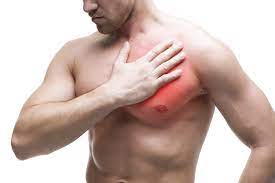
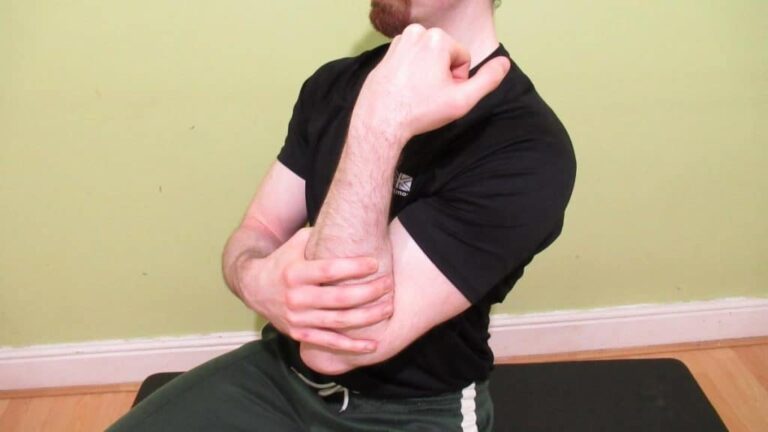
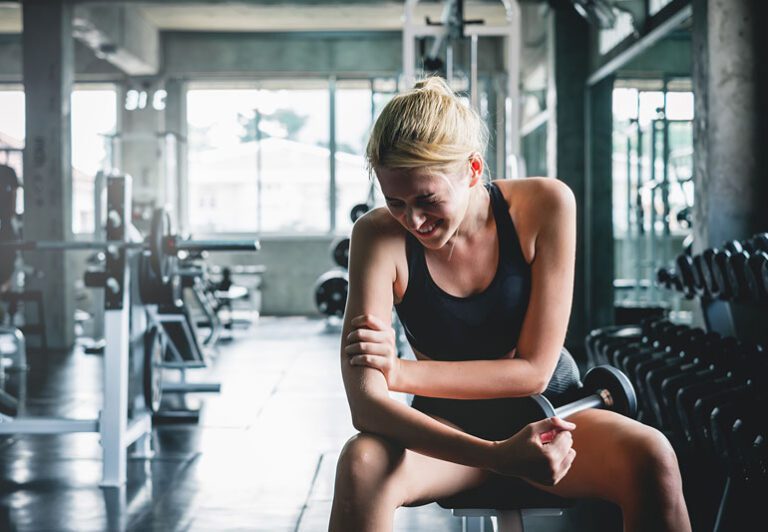

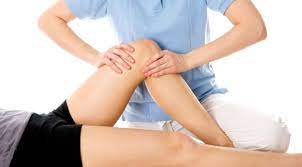
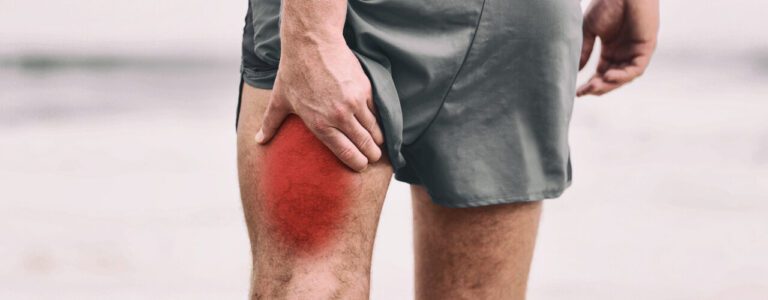
One Comment